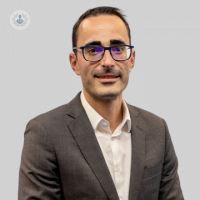Tips and recommendations after suffering a heart attack
Written by:Myocardial infarction (AMI) occurs when one of the arteries that carry blood to the heart occludes whole or in part. When the occlusion is complete we call ST elevation myocardial infarction (STEMI) and if the obstruction is critical but not complete, is called ST elevation myocardial infarction (NSTEMI), given the different representation on the electrocardiogram.

The IAM is caused by rupture plates atherosclerosis, which produces the output of said plates content and formation of a thrombus occluding the coronary artery. The lack of irrigation leads to myocardial ischemia (lack of blood to the heart muscle) and symptoms reported by patients.
What does the patient suffer a heart attack and how it affects the functioning of your heart?
The main consequence for the patient is the lack of risk in the myocardium. If persist for hours with the occluded artery, muscle (necrosis) dies, worsening the patient's prognosis, both in the acute phase of AMI and chronic. Every 30 minutes with the occluded artery "dies" 7% of heart muscle that does not get blood and this damage is irreversible. It is therefore essential to mobilize at an early stage to health services after the first few minutes with symptoms consistent with a heart attack.
How determines a stroke patient's life
30% of heart attacks in Spain die before reaching the hospital or facility during your stay, despite the huge improvement in known as "stroke code" in each autonomy care networks.
In other cases, patients are discharged after a heart attack, should lead a heart - healthy life, avoid toxic habits and take medication prescribed by a specialist in Cardiology which normally consists of at least 4 or 5 different active ingredients. Patient prognosis and quality of life is very variable, depending on the degree of impairment of cardiac function, the anatomy of the coronary arteries, the option of complete revascularization of all arteries or a partially etc.
Recommendations and advice after suffering a heart attack
A patient after a heart attack, becomes a chronic patient. In the first two to three months it is too important to incorporate the program of cardiac rehabilitation center, which explain the different risk factors (hypertension, cholesterol, diabetes ...), the therapeutic objectives of the drugs you take, signals alert, legislation such as the driving etc. It is essential that the patient understands and understand the disease you have and how to combat it.
After the first phase, the goal of all this work is that the patient regains the quality of life prior to infarction but, as mentioned, wearing a heart-healthy life: Mediterranean diet, daily exercise, avoiding alcohol and snuff, remain constant in the treatment scheduled by your doctor. With all this the patient should get restore the quality of life and activity prior to the stroke, always following the advice of his doctors, who will accompany you in both the acute phase of infarction and chronic.


